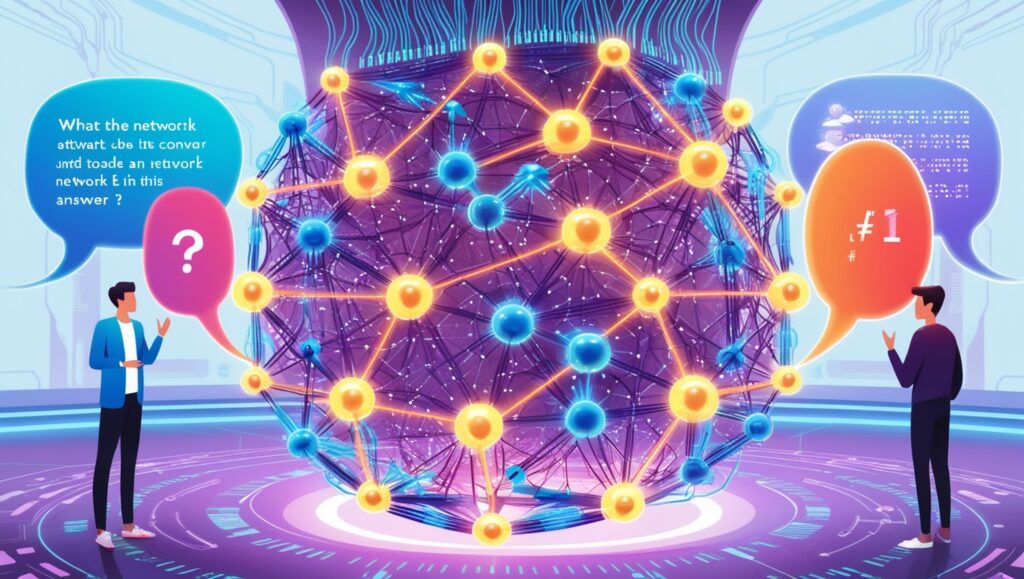Table of Contents

Artificial Intelligence (AI) models, like those behind popular chatbots, seem almost magical. You ask a question, and they respond with an answer—all within seconds. But what’s happening behind the scenes? How does the model understand your question and generate an answer? Let’s break it down step by step, using simple analogies and clear explanations.
1. Turning Words Into Numbers: The Starting Point
When you type a question, like “What is the capital of India?”, the model doesn’t work with words directly. Instead, it converts each word into a unique series of numbers using a process called tokenization. These numbers, called embeddings, are like digital fingerprints of the words.
Why Numbers?
Computers can’t process words the way humans do. By turning words into numbers, the model can use math to analyze and understand relationships between words. For example:
- “Capital” might be represented as
[2.3, -1.5, 0.8]. - “India” might be
[1.2, 3.1, -0.4].
Each number is part of a large vector (a list of numbers) that captures the word’s meaning in a specific context.
2. Understanding the Question: Finding Relationships Between Words
Once the words are converted to numbers, the model begins analyzing how they relate to each other. For example, in the question “What is the capital of India?”, the model learns:
- “Capital” is connected to geography.
- “India” is a country.
- The word “What” signals a question.
This understanding happens through something called the transformer architecture. Think of it like a super-smart highlighter that scans the input and figures out which words are important to focus on.
Attention Mechanism: The Super-Smart Highlighter
The transformer uses a tool called attention to assign importance to different parts of the question. For example:
- High attention might be given to “capital” and “India”.
- Less attention might go to words like “What” or “is”.
This ensures the model focuses on the most relevant pieces of information.
3. Finding the Answer: A Treasure Map in a Shared Space
Once the question is understood, the model searches for the answer. But how does it know where to look?
Shared Semantic Space
The question and all possible answers exist in the same semantic space—a high-dimensional map where related ideas are close to each other. For example:
- The numeric representation of “What is the capital of India?” might point toward a region in this space where geographic answers are located.
- The representation of “Delhi” is already stored in this space, close to the “India” region.
By following this map, the model locates the answer “Delhi” in the same space where the question resides.
4. How the Model Generates the Answer
Now that the model knows where the answer is, it needs to express it in words. This happens one word (or token) at a time through a process called decoding.
Step-by-Step Decoding
- The model predicts the first word of the answer, such as “Delhi”.
- Using “Delhi” as context, it predicts the next word (if needed).
- This continues until the answer is complete.
During this process, the model constantly refers back to the numeric representation of the question to ensure the answer stays relevant.
5. Training the Model: Teaching It to Map Questions to Answers
The ability to connect questions and answers doesn’t happen by magic. It’s the result of extensive training on millions (or even billions) of examples.
How Training Works
- Input-Output Pairs: The model is fed pairs of questions and correct answers (e.g., “What is the capital of India?” and “Delhi”).
- Learning Patterns: Over time, the model learns patterns in the data. For instance, it understands that questions about capitals often relate to countries.
- Minimizing Errors: If the model gets an answer wrong during training, it adjusts its internal parameters to reduce future errors.
Through this process, the model builds a vast internal map that helps it connect any question to the correct answer.
6. Why Does It Work So Well?
The magic lies in the model’s ability to:
- Understand Context: Words like “capital” and “India” are interpreted in context, not isolation.
- Focus on Relevance: The attention mechanism ensures the model only focuses on the most important parts of the input.
- Generalize Knowledge: Even if the model hasn’t seen your exact question before, it can generalize from similar examples.
7. Limitations and Challenges
While these models are incredibly powerful, they aren’t perfect:
- They Don’t Truly Understand: The model doesn’t “know” what “Delhi” or “India” is; it’s working based on patterns in data.
- Dependence on Training Data: If a concept isn’t well-represented in the training data, the model might struggle to answer related questions.
- Computational Intensity: Training and running these models require significant computing power.
8. Conclusion: The AI Model as a Supercharged Librarian
Think of an AI model as a supercharged librarian:
- You ask a question (numeric representation of the input).
- It searches a vast library (the semantic space) to find the most relevant answer.
- It gives you the answer, word by word, while ensuring it matches your query.
By converting words into numbers and leveraging advanced mechanisms like attention and shared semantic spaces, AI models can provide accurate and relevant answers at lightning speed. While the underlying math is complex, the result is a seamless user experience—making AI one of the most powerful tools of our time.
